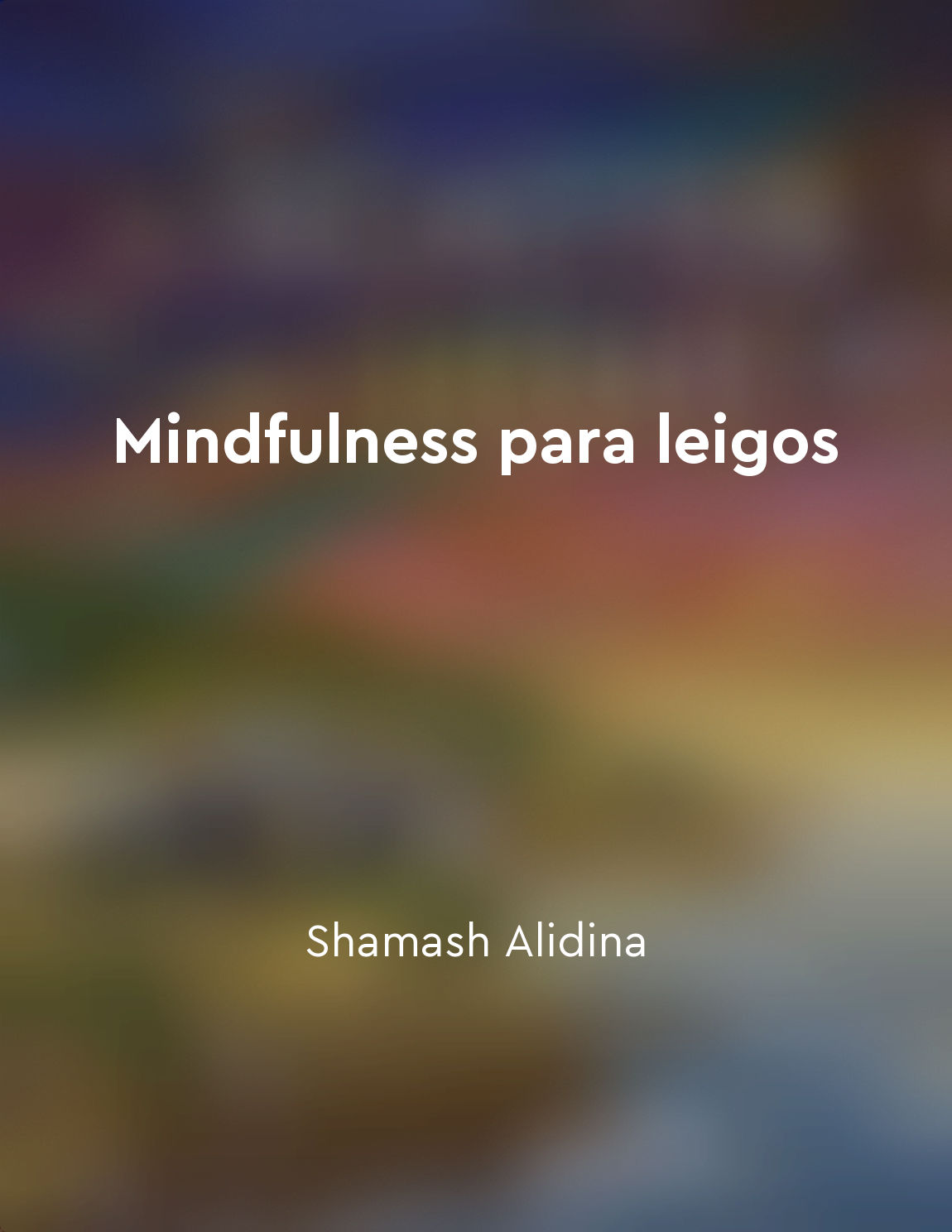Educators can use mindfulness to address conflicts and promote conflict resolution skills from "summary" of The Way of Mindful Education by Daniel Rechtschaffen
When conflicts arise in the classroom, educators can use mindfulness as a tool to help address the issues and teach students valuable conflict resolution skills. By cultivating a sense of presence and awareness, teachers can create a space where students feel safe and supported in navigating their emotions and finding peaceful resolutions. Mindfulness practices such as deep breathing, body scans, and guided meditations can help students regulate their emotions and calm their minds in the midst of conflict. Educators can model mindfulness by staying calm and centered themselves, even in the face of challenging situations. By remaining present and grounded, teachers can create a sense of stability that can help de-escalate conflicts and create space for open communication and understanding. Mindfulness can also help teachers cultivate empathy and compassion towards their students, which can be essential in helping students work through conflicts in a positive and constructive way. In addition to cultivating mindfulness in themselves and their students, educators can also incorporate mindfulness practices directly into conflict resolution strategies. For example, teachers can guide students through mindful communication exercises that help them listen actively, speak mindfully, and express their emotions in a constructive way. By incorporating mindfulness into conflict resolution processes, educators can help students develop important skills such as emotional regulation, empathy, and effective communication.- Mindfulness can be a powerful tool for educators to address conflicts in the classroom and promote the development of valuable conflict resolution skills in their students. By cultivating presence, awareness, and compassion, teachers can create a supportive environment where students feel empowered to navigate conflicts in a healthy and constructive way. Mindfulness can help students regulate their emotions, communicate effectively, and find peaceful resolutions to conflicts, ultimately fostering a positive and harmonious classroom environment.
Similar Posts

Conflict resolution involves finding common ground and compromise
According to Robert Larson, conflict resolution is a process that requires individuals to work towards finding common ground an...

Find joy in simple pleasures
The concept of finding joy in simple pleasures is a recurring theme throughout the teachings of the Dalai Lama. It is a reminde...
Use storytelling to engage the whole brain
When we engage in storytelling with our children, we are not only captivating their imaginations, but we are also activating va...
Accept uncomfortable feelings as part of life's experience
Life is full of ups and downs, highs and lows, joy and pain. It's like a rollercoaster ride that we can't control. We often try...
Practice selfcompassion and kindness towards yourself and others
In our daily lives, we often find it easier to show compassion and kindness towards others than towards ourselves. We tend to b...
Mindful listening fosters deeper connections with others
Mindful listening is a powerful practice that can transform our relationships with others. When we engage in mindful listening,...
The practice of meditation can lead to a deep sense of peace
Meditation is a practice that holds the potential to transform our experience of the world. By simply sitting quietly and payin...
Learning to observe thoughts without attachment can reduce anxiety
When we experience anxiety, our minds can become overwhelmed with thoughts that seem to spiral out of control. We might find ou...

Breathing techniques are often used to cultivate mindfulness
Breathing techniques play a vital role in the practice of mindfulness. By focusing on the breath, we can anchor ourselves in th...
Communication is key in expressing feelings and needs
Effective communication is the cornerstone of any healthy relationship. When it comes to expressing our feelings and needs, com...

